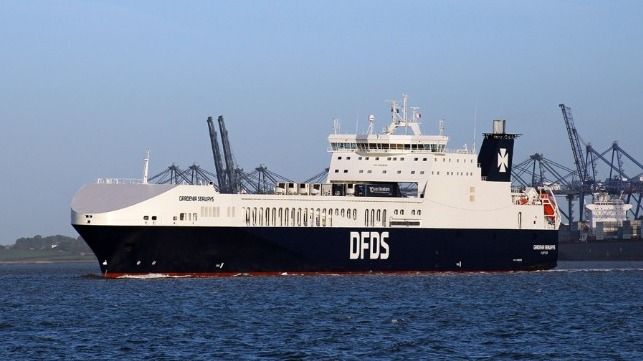DFDS Reports Post-COVID-19 Rebound in Freight and Passenger Demand

While second quarter results were down sharply reflecting the economic impact of the pandemic, European freight and passenger operator DFDS provided a cautiously optimistic outlook. Highlighting the resumption of most services, management improved on its earlier forecasts of significant declines for the full year 2020.
“Our outlook is improved,” said DFDS CEO Torben Carlsen. “Freight volumes have picked up and the demand for ferry travel is encouraging on our reopened passenger routes. It is uncertain whether the pickup in demand is sustainable and we, therefore, remain alert.”
In June, the company citing projections for significant business declines due to the pandemic, announced a nearly 10 percent reduction for its workforce. DFDS forecast a nearly 45 percent decline for its total year income (EBITDA). Based on what management termed encouraging signs they increased the income outlook between 10 and 25 percent. However, they are still forecasting income to be down by a third for the full year.
Results in the second quarter were especially hard hit by the COVID-19 related restrictions during the quarter. The company responded by suspending passenger operations on two routes and both laying up freighters and reducing sailing schedules. Despite those efforts, total revenues were down 34 percent in the quarter, with passenger revenues down by 86 percent. Passengers had been limited to essential travel during the peak restrictions.
Freight revenues were down by a quarter with volumes down by 15 percent during the second quarter. DFDS reported that industrial volumes, including automobiles, were hardest hit while consumer goods were less impacted. U.K. imports from the EU were down by a third during April and May, but U.K. exports were only down 11 percent during those two months. The logistic division also experienced significant declines with volumes down a quarter in April but rebounding to be down only three percent in June.
The Baltic Sea area being was the European region least impacted by the virus helped DFDS to maintain freight volumes during the second quarter. Further, the company said that volumes had rebounded starting in May and continuing into June and July.
Responding to the rebound in volumes, DFDS said it currently has only one freight ferry laid up. At its peak, they had laid up 13 freight ferries but by the end of June had returned all but five to service. Also during the quarter DFDS made an agreement with Eckero Line to optimized service on the Northern Baltic route for freight and delivered one previously sold ro-pax ferry to its new owner.
Similarly, in the passenger markets, the company had not projected a return to operations until August. DFDS was able to resume service between Oslo and Copenhagen in late June and between Amsterdam and Newcastle in mid-July. Passengers volumes, it reported, have increased in the areas where COVID-19 is low but less so for U.K. tourist volumes due to continued COVID concerns.
Based on the faster than expected increases in demand, DFDS management remains cautious but encouraged. They are still expecting freight volume growth rates to be below 2019 but increased their forecast by half lowering the expected decline from 15 to 10 percent. They cautioned that some of the initial improvements could be due to a backlog in freight shipments that would be reduced with the resumption of service.
For the passenger operations, they noted that the recovery continues to be tied to travel restrictions and the potential for a resurgence of the virus. They also noted that while the pickup in demand has been quick and encouraging, passenger bookings are still very much last minute.
The rebound prompted the company to recall furloughed employees. At its peak, DFDS had furloughed 2,800 employees. By the end of the second quarter that had been reduced to 1,000 employees and it now stands at approximately 500 people still on furlough. The company, however, proceeded with dismissing approximately 650 employees from a pre-COVID-19 workforce of approximately 8,600 people.
